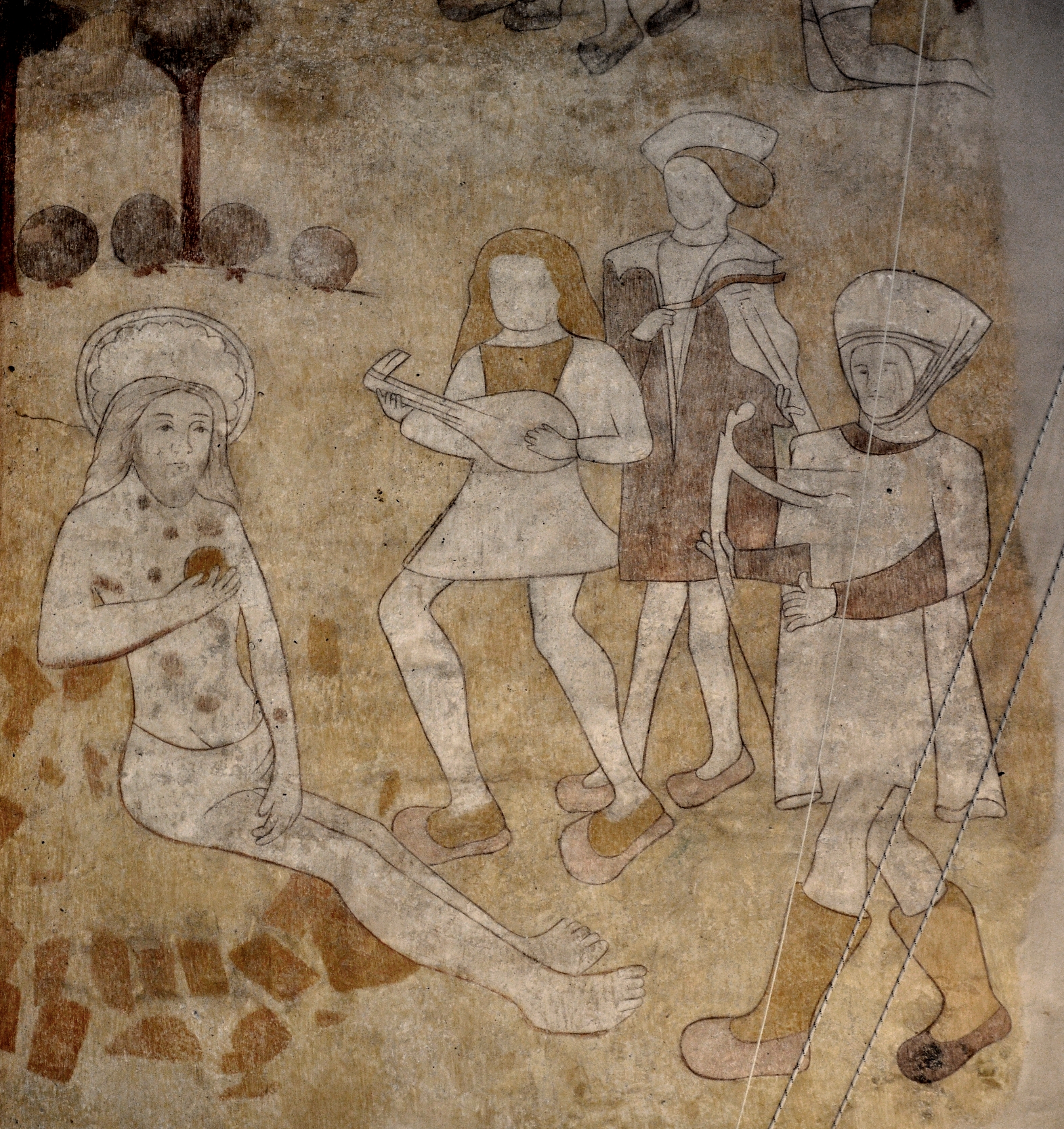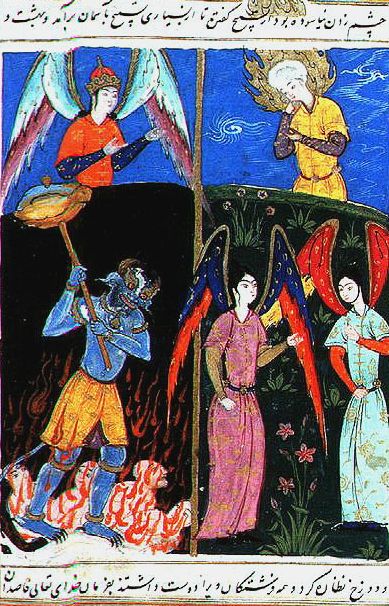|
Job 14
Job 14 is the fourteenth chapter of the Book of Job in the Hebrew Bible or the Old Testament of the Christian Bible.Holman Illustrated Bible Handbook. Holman Bible Publishers, Nashville, Tennessee. 2012. The book is anonymous; most scholars believe it was written around 6th century BCE. This chapter records the speech of Job, which belongs to the Dialogue section of the book, comprising Job 3:1– 31:40. Text The original text is written in Hebrew language. This chapter is divided into 22 verses. Textual witnesses Some early manuscripts containing the text of this chapter in Hebrew are of the Masoretic Text, which includes the Aleppo Codex (10th century), and Codex Leningradensis (1008). Fragments containing parts of this chapter in Hebrew were found among the Dead Sea Scrolls including 4Q100 (4QJob; 50–1 BCE) with extant verses 4–6 and 4Q101 (4QpaleoJob; 250–150 BCE) with extant verses 13–18. There is also a translation into Koine Greek known as the Septuagint, made ... [...More Info...] [...Related Items...] OR: [Wikipedia] [Google] [Baidu] |
Book Of Job
The Book of Job (), or simply Job, is a book found in the Ketuvim ("Writings") section of the Hebrew Bible and the first of the Poetic Books in the Old Testament of the Christian Bible. The language of the Book of Job, combining post-Babylonian Hebrew and Aramaic influences, indicates it was composed during the Persian period (540-330 BCE), with the poet using Hebrew in a learned, literary manner. It addresses the problem of evil, providing a theodicy through the experiences of the eponymous protagonist. Job is a wealthy God-fearing man with a comfortable life and a large family. God discusses Job's piety with Satan (). Satan rebukes God, stating that Job would turn away from God if he were to lose everything within his possession. God decides to test that theory by allowing Satan to inflict pain on Job. The rest of the book deals with Job's suffering and him successfully defending himself against his unsympathetic friends, whom God admonishes, and God's sovereignty over na ... [...More Info...] [...Related Items...] OR: [Wikipedia] [Google] [Baidu] |
Biblia Hebraica (Kittel)
''Biblia Hebraica'' refers primarily to the three editions of the Hebrew Bible edited by Rudolf Kittel. When referenced, Kittel's ''Biblia Hebraica'' is usually abbreviated BH, or BHK (K for Kittel). When specific editions are referred to, ''BH1'', ''BH2'' and ''BH3'' are used. ''Biblia Hebraica'' is a Latin phrase meaning Hebrew Bible, traditionally used as a title for printed editions of the Tanakh. Less commonly, ''Biblia Hebraica'' may also refer to subsequent editions in the ''Biblia Hebraica'' series which build on the work of Kittel's editions. Editions by Kittel The Old Testament scholar Rudolf Kittel from Leipzig Leipzig (, ; ; Upper Saxon: ; ) is the most populous city in the States of Germany, German state of Saxony. The city has a population of 628,718 inhabitants as of 2023. It is the List of cities in Germany by population, eighth-largest city in Ge ... started to develop a critical edition of the Hebrew Bible in 1901, which would later become the first of it ... [...More Info...] [...Related Items...] OR: [Wikipedia] [Google] [Baidu] |
Job 31
Job 31 is the 31st chapter of the Book of Job in the Hebrew Bible or the Old Testament of the Christian Bible.Holman Illustrated Bible Handbook. Holman Bible Publishers, Nashville, Tennessee. 2012. The book is anonymous; most scholars believe it was written around the 6th century BCE. This chapter records the speech of Job, which belongs to the Dialogue section of the book, comprising Job 3:1– 31:40. Text The original text is written in Hebrew language. This chapter is divided into 40 verses. Textual witnesses Some early manuscripts containing the text of this chapter in Hebrew are of the Masoretic Text, which includes the Aleppo Codex (10th century), and Codex Leningradensis (1008). Fragments containing parts of this chapter in Hebrew were found among the Dead Sea Scrolls including 4Q99 (4QJob; 175–60 BCE) with extant verses 14–19 and 4Q100 (4QJob; 50–1 BCE) with extant verses 20–21. There is also a translation into Koine Greek known as the Septuagint, made in the ... [...More Info...] [...Related Items...] OR: [Wikipedia] [Google] [Baidu] |
Job 13
Job 13 is the thirteenth chapter of the Book of Job in the Hebrew Bible or the Old Testament of the Christian Bible.Holman Illustrated Bible Handbook. Holman Bible Publishers, Nashville, Tennessee. 2012. The book is anonymous; most scholars believe it was written around 6th century BCE. This chapter records the speech of Job, which belongs to the Dialogue section of the book, comprising Job 3:1– 31:40. Text The original text is written in Hebrew language. This chapter is divided into 28 verses. Textual witnesses Some early manuscripts containing the text of this chapter in Hebrew are of the Masoretic Text, which includes the Aleppo Codex (10th century), and Codex Leningradensis (1008). Fragments containing parts of this chapter in Hebrew were found among the Dead Sea Scrolls including 4Q100 (4QJob; 50–1 BCE) with extant verse 4 and 4Q101 (4QpaleoJob; 250–150 BCE) with extant verses 18–27. There is also a translation into Koine Greek known as the Septuagint, made in th ... [...More Info...] [...Related Items...] OR: [Wikipedia] [Google] [Baidu] |
Job 12
Job 12 is the twelfth Chapters and verses of the Bible, chapter of the Book of Job in the Hebrew Bible or the Old Testament of the Christianity, Christian Bible.Holman Illustrated Bible Handbook. Holman Bible Publishers, Nashville, Tennessee. 2012. The book is anonymous; most scholars believe it was written around 6th century BCE. This chapter records the speech of Job (biblical figure), Job, which belongs to the Dialogue section of the book, comprising Job 3:1–Job 31:40, 31:40. Text The original text is written in Biblical Hebrew, Hebrew language. Chapters and verses of the Bible, This chapter is divided into 25 verses. Textual witnesses Some early manuscripts containing the text of this chapter in Biblical Hebrew, Hebrew are of the Masoretic Text, which includes the Aleppo Codex (10th century), and Leningrad Codex, Codex Leningradensis (1008). There is also a translation into Koine Greek known as the Septuagint, made in the last few centuries BC; some extant ancient manuscri ... [...More Info...] [...Related Items...] OR: [Wikipedia] [Google] [Baidu] |
Suffering
Suffering, or pain in a broad sense, may be an experience of unpleasantness or aversion, possibly associated with the perception of harm or threat of harm in an individual. Suffering is the basic element that makes up the negative valence (psychology), valence of affective phenomena. The opposite of suffering is pleasure or happiness. Suffering is often categorized as physical or mental. It may come in all degrees of intensity, from mild to intolerable. Factors of duration and frequency of occurrence usually compound that of intensity. Attitudes toward suffering may vary widely, in the sufferer or other people, according to how much it is regarded as avoidable or unavoidable, useful or useless, deserved or undeserved. Suffering occurs in the lives of Sentience, sentient beings in numerous manners, often dramatically. As a result, many fields of human activity are concerned with some aspects of suffering. These aspects may include the nature of suffering, its processes, its orig ... [...More Info...] [...Related Items...] OR: [Wikipedia] [Google] [Baidu] |
Divine Retribution
Divine retribution is supernatural punishment of a person, a group of people, or everyone by a deity in response to some action. Many cultures have a story about how a deity imposed punishment on previous inhabitants of their land, causing their doom. An example of divine retribution is the story found in many religions about a great flood destroying all of humanity, as described in the Epic of Gilgamesh, the Hindu Vedas, or the Book of Genesis (6:9–8:22), leaving one principal 'chosen' survivor. In the first example, the survivor is Utnapishtim, in the Hindu Vedas, it is Manu, and in the last example, it is Noah. References in the Old Testament and the Quran to a man named Nuh (Noah) who was commanded by God to build an ark also suggest that one man and his followers were saved in a great flood. Other examples in Bible history include the dispersion of the builders of the Tower of Babel (Genesis 11:1–9), the destruction of Sodom and Gomorrah (Genesis 18:20–21, 19: ... [...More Info...] [...Related Items...] OR: [Wikipedia] [Google] [Baidu] |
Death
Death is the end of life; the irreversible cessation of all biological functions that sustain a living organism. Death eventually and inevitably occurs in all organisms. The remains of a former organism normally begin to decompose shortly after death. Some organisms, such as '' Turritopsis dohrnii'', are biologically immortal; however, they can still die from means other than aging. Death is generally applied to whole organisms; the equivalent for individual components of an organism, such as cells or tissues, is necrosis. Something that is not considered an organism, such as a virus, can be physically destroyed but is not said ''to die'', as a virus is not considered alive in the first place. As of the early 21st century, 56 million people die per year. The most common reason is aging, followed by cardiovascular disease, which is a disease that affects the heart or blood vessels. As of 2022, an estimated total of almost 110 billion humans have died, or rou ... [...More Info...] [...Related Items...] OR: [Wikipedia] [Google] [Baidu] |
Afterlife
The afterlife or life after death is a purported existence in which the essential part of an individual's Stream of consciousness (psychology), stream of consciousness or Personal identity, identity continues to exist after the death of their physical body. The surviving essential aspect varies between belief systems; it may be some partial element, or the entire soul or spirit, which carries with it one's personal identity. In some views, this continued existence takes place in a Supernatural, spiritual realm, while in others, the individual may be reborn into World#Religion, this world and begin the life cycle over again in a process referred to as reincarnation, likely with no memory of what they have done in the past. In this latter view, such rebirths and deaths may take place over and over again continuously until the individual gains entry to a spiritual realm or otherworld. Major views on the afterlife derive from religion, Western esotericism, esotericism, and metaphy ... [...More Info...] [...Related Items...] OR: [Wikipedia] [Google] [Baidu] |
Sheol
Sheol ( ; ''Šəʾōl'', Tiberian: ''Šŏʾōl'') in the Hebrew Bible is the underworld place of stillness and darkness which is death. Within the Hebrew Bible, there are few—often brief and nondescript—mentions of Sheol, seemingly describing it as a place where both the righteous and the unrighteous dead go, regardless of their moral choices in life. The implications of Sheol within the texts are therefore somewhat unclear; it may be interpreted as either a generic metaphor describing "the grave" into which all humans invariably descend, or an actual state of afterlife within Israelite thought. Though such practices are forbidden, the inhabitants of Sheol can, under some circumstances, be summoned by the living, as when the Witch of Endor calls up the spirit of Samuel for King Saul. While the Hebrew Bible appears to describe Sheol as the permanent place of the dead, in the Second Temple period (roughly 500 BC – 70 AD), a more diverse set of ideas developed. I ... [...More Info...] [...Related Items...] OR: [Wikipedia] [Google] [Baidu] |
Modern English Version
The Modern English Version (MEV) is an English language, English Bible translations, translation of the Bible begun in 2005 and completed in 2014. The work was edited by James F. Linzey, and is an update of the King James Version (KJV), re-translated from the Masoretic Text and the ''Textus Receptus.'' History In June 2005, Southern Baptist Convention, Southern Baptist minister, chief editor, and executive director Rev. James F. Linzey assembled and directed the Committee on Bible Translation, which included Stanley M. Horton serving as the senior editorial advisor. The Committee produced an updated edition of the KJV called the MEV, which is the KJV in a more modern English vernacular. The translators began the work on June 2, 2005; they completed the New Testament on October 25, 2011, and the Old Testament on May 28, 2014."Preface," ''MEV Thinline Reference Bible, Modern English Version'', (p. xi) 2014. Passio Committee members include Eugene C. Ulrich, Stephen L. Herring, Eric ... [...More Info...] [...Related Items...] OR: [Wikipedia] [Google] [Baidu] |
New English Translation
The New English Translation (NET) is a free, "completely new" English translation of the Bible, "with 60,932 translators' notes" sponsored by the Biblical Studies Foundation and published by Biblical Studies Press. History and textual basis The New English Translation, like the New International Version, New Jerusalem Bible and the New American Bible, is a completely new translation of the Bible, not an update or revision of an older one (such as the New Revised Standard Version of 1989, which is a revision of the Revised Standard Version of 1946/71, itself a revision of the American Standard Version of 1901). The translation and extensive notes were undertaken by more than twenty biblical scholars who worked directly from the best currently available Hebrew, Aramaic, and Greek texts. The NET Bible was initially conceived at an annual meeting of the Society of Biblical Literature in November 1995 in Philadelphia, Pennsylvania. The translation project originally started ... [...More Info...] [...Related Items...] OR: [Wikipedia] [Google] [Baidu] |








